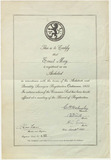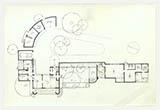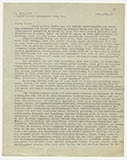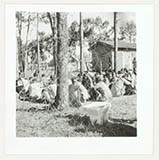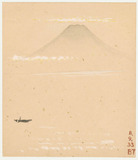Ernst May: Layout of his farm in Tanzania (c. 1934)
Ernst May: Layout of his farm in Tanzania (c. 1934)
Ernst ist unbeschreiblich glücklich in seinem neuen Beruf. Ich muß nur immer bremsen, daß er nicht alles zu großartig macht, sonst ist auf einmal das Geld alle.
[Ernst is indescribably happy in his new profession. Only, I have to keep putting the brakes on, making sure that his plans aren't too grand, otherwise all the money will soon disappear. (ed. trans.)]
Ilse May in a letter to her family, 18 May 1934
Upon arriving in Tanganyika (now Tanzania) Ernst May was not able to start work immediately as an architect and urban planner. In the first years of their exile, May, his wife and their two sons lived the life of farmers. First May familiarised himself with farm management on the land of a German family. Then, in 1934, he bought his family around 160 hectares of land close to Arusha. The hand-drawn plan shows the area of his West Maru Alp-Farm (outlined in red).
The dedication with which the Mays worked their newly acquired farm commands great respect. Ilse and Ernst May planted vegetables, cereals and fruit trees and tried their hand at coffee cultivation. Ernst May also engaged in animal breeding. He sold the resulting dairy products in the surrounding area. The Mays also paid the school fees for his two sons in the form of home-grown food.
While the location of the farmhouse which May designed himself is not featured on the hand-drawn plan, the "Phelps" house is shown in the top right corner. This was the residence of the previous English owner of the West Meru Alp-Farm. May used a cross to mark a watering hole in the bottom right of the plan. He only succeeded in meeting the considerable demand for water for his farm by constructing two pipelines. After three years, May put his farm up for sale in 1937. He had started to receive more and more architectural jobs and eventually registered in Kenya as an architect.


